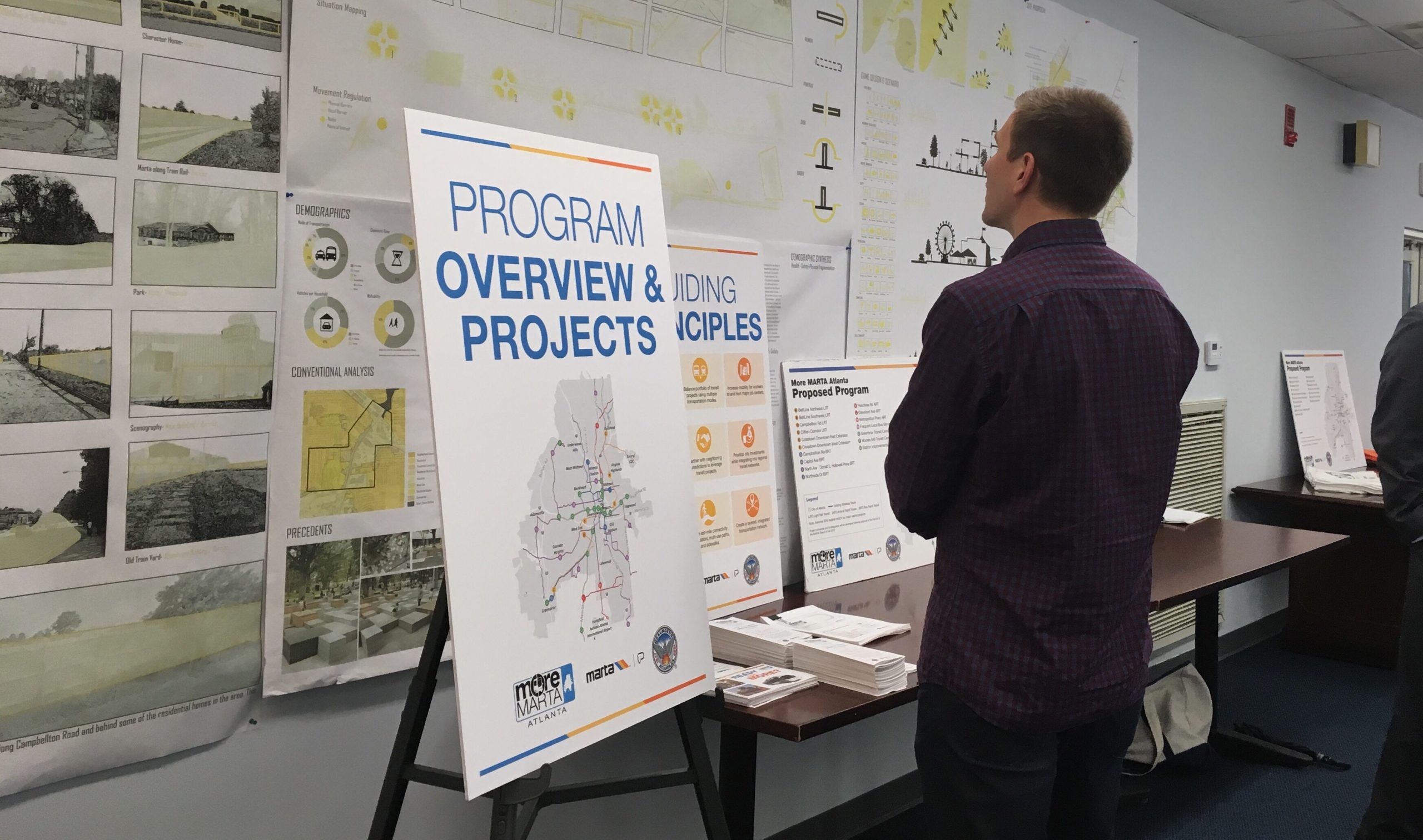
Atlanta City Council members Natalyn Archibong (District 5), Carla Smith (District 1), Amir Farokhi (District 2) and Jennifer Ide (District 6) hosted More MARTA’s third community forum at the Virginia Highland Church on Aug. 15.
Public opinion has prompted the More MARTA Atlanta program. City of Atlanta residents had passed the More MARTA Atlanta half-penny sales tax, which will generate around $2.5 billion for transit expansion and enhancement plans for the next 40 years. Since, commuters have expressed overwhelming interest in BeltLine rail.
The More MARTA Atlanta program has been Atlanta’s effort to accommodate a fast-rising population. According to the U.S. Census report, the Atlanta metro area gained nearly 90,000 transplants between 2016 and 2017.
With a growing population, the third of the four MARTA forums have helped direct MARTA’s planning for its riders. Practical transit expenditure has grown more pertinent due to a 2.6 percent decrease in MARTA’s passenger trips in 2017—the second consecutive year of ridership decline.
Ben Limmer, MARTA assistant general manager, said, “As we progress from the proposed project list to the final project list, it is critical for us to hear from all of our valued stakeholders, particularly City of Atlanta residents and MARTA patrons, to ensure that the More MARTA Atlanta program effectively addresses the priorities and needs of the communities we serve.”
The proposed program aims to serve 126 neighborhoods, increase job access by 56 percent, improve transit service to neglected communities by 61 percent and provide access to more than 70 healthcare facilities, 83 grocery stores and 116 schools and universities.
District 6 Councilwoman Jennifer D. Ide said, “It is exciting to be part of Atlanta and the region as it plans for its largest transit investment in its history. It has been nearly two decades since the last significant MARTA expansion; we are ready for increased options and connectivity.”
MARTA will spend $2.5 billion over the next 40 years and the Council have been voicing their District concerns at each forum regarding expansion.
Amir R. Farokhi, District 2 councilman, oversees the Georgia State area in Downtown in addition to Midtown, Old Fourth Ward, Inman Park, Poncey-Highland and Candler Park neighborhoods.
“District 2 is very well served by the proposed expansion. It includes light rail expansion from the current streetcar to the eastside BeltLine trail and to Ponce City Market which is all in District 2,” Farokhi said. “The [bus rapid transit] line that runs on North Avenue across east-west into midtown and across town which is terrific and much needed, so in that respect, the plan looks very positive.”
Yet, as with previous More MARTA forums, Atlanta commuters have been abuzz with concern for overlooked transit modules.
“I think there are broader city-wide concerns around how all the projects fit together and whether some of the projects deserve to be on the list or not or if some that aren’t on the list should be on the list,” Farokhi said. “I think we need to be mindful of residents alongside issues of equity and transportation management.”
Concerns shoot back to 2016, as seventy percent of respondents in a MARTA survey expressed a desire for rail along the BeltLine.
Andre Dickens, Atlanta City Council Post 3 at Large, said in an 11Alive interview, “Most people would love to have some sort of transit along the BeltLine. It was made to be a transit corridor. Right now, there’s a lot of jogging and walking and skateboarding which is lovely and great, but it’s also meant to be a way to connect people along this 22-mile loop.”
Atlanta BeltLine recently purchased the remaining railroad corridor for $6.3M, which is needed to complete the loop. The inactive rail corridor, known as the “Kudzu Line,” has potential for the BeltLine to initiate rail service if the MARTA board deems it economical.
“Ongoing community engagement and input is critical in steering the More MARTA Atlanta program in the right direction,” MARTA General Manager and CEO Jeffrey Parker said. “It’s critical that we hear from all of our valued stakeholders and evaluate their input as we chart the course ahead for this important program. It’s good to hear what the citizens and the community believe should be the priorities.”
In addition to stakeholder input, More MARTA claims data analysis and performance measurements influence their proposed transit projects.
“Through a thorough analysis of technical data, performance measurements, and stakeholder input, More MARTA Atlanta’s 17 proposed transit projects include the development of light rail, bus rapid transit, and arterial-rapid transit services,” Limmer said. “The addition of new transit centers and increased fixed–route bus service; and station upgrades, all of which will increase mobility, connectivity, and accessibility throughout the City of Atlanta.”
According to a MARTA survey and report, the top five MARTA priorities for commuters have been increased bus frequency and hours of service, Atlanta BeltLine transit development, Atlanta Streetcar expansion and heavy rail expansion.
The “Most Favored” section of the report indicated BeltLine rail as the most popular project. The More MARTA tax can cover BeltLine rail, so commuters in favor of BeltLine rail hope to see their vocalizations realized.
Ryan Gravel, a Georgia Tech alumni whose Master’s thesis spurred the creation of the BeltLine, stated in a blog post, “Transit remained central to the concept, however, because it was the thing that made the BeltLine for everyone … Both physically and metaphorically, it connects this divided city back together—north and south; east and west; young and old; rich and poor; every race, income, religion, and creed—offering a vision for equity back before that was a buzzword.”
